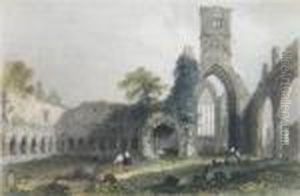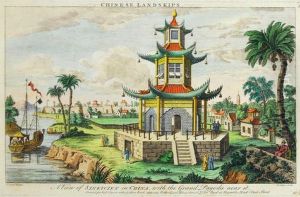John Cousen Paintings
John Cousen was an English engraver, born in 1804 in Bradford, West Yorkshire. Initially apprenticed to a local worsted manufacturer, Cousen soon displayed a talent for art which led him to pursue a career in engraving. He moved to London to further develop his skills and was trained under the notable line-engraver Charles Rolls. During his apprenticeship, Cousen honed his talent for capturing intricate details, which became a hallmark of his later work.
Cousen's career flourished in the Victorian era, a period when the art of engraving was highly appreciated. He became well-known for his landscape engravings and his ability to reproduce the works of popular painters of the time, such as J.M.W. Turner. Cousen's engravings were prized for their precision and the way they conveyed the light and atmosphere of the original paintings. His work contributed to the popularization of the artists he engraved, helping to bring fine art to the homes of the burgeoning middle class.
Throughout his career, Cousen worked for various art publications, including 'The Art Journal,' which was a significant Victorian periodical that featured engravings of contemporary and historical artworks. He also produced plates for books and standalone prints. Among his notable works are the engravings of Turner's 'The Fighting Temeraire' and 'Crossing the Brook,' which display his meticulous approach and sensitivity to the original's qualities.
John Cousen's dedication to his craft earned him recognition from his peers and art enthusiasts. Despite the rise of photography in the latter half of the 19th century, which led to a decline in traditional engraving, Cousen maintained a respected reputation until his death in 1880. Today, his engravings remain of interest to collectors and art historians who study the Victorian era and the art of engraving.

